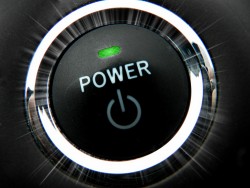- April 20, 2017
- Posted by: Catalyst
- Category: Business Energy News

The startup company, Hydrostor, has an energy storage scheme that appears to be cost-effective. Hydrostor has created an energy storage system that utilises compressed air to generate commercial electricity. Hydrostor, an energy storage company based in Canada, has claimed that the new system will cost substantially less than regular battery storage, while producing as much energy as a natural gas plant.
Dubbed the Hydrostor Terra, the new system begins its flow cycle by compressing air and sending it to an underground tank. During this process, heat is generated and the thermal energy is stored in a management system to be used later.
When there is not an ample supply of electricity, the Hydrostor Terra will draw compressed air from the holding tank and heat it up with the thermal energy that was previously stored. This heated air is guided toward the turbo-expander, causing it to move. This mechanical energy powers the connected generator which converts it to electricity.
The Hydrostor Terra’s method of generating electricity is a novel approach to compressed-air energy systems, or CAES. Other CAES’ that are currently on the market typically heat compressed air with natural gas.
This traditional approach to heating air prevents the energy storage system from being efficient and eco-friendly. Hydrostor bypassed these issues by designing their Terra system to be non-gas and adiabatic, which means that the heat generated during the air compression process does not leave the enclosed system.
Adiabatic compressed air systems are typically capable of achieving 70% efficiency. Although Hydrostor’s Terra system can only reach 60% efficiency, it is still marginally better than their natural gas counterparts that have an average efficiency of 48%.
According to Hydrostor, they own and operate the only adiabatic compressed-air energy storage system, or A-CAES that is utility-tied. The system in question has been operational since 2015 and produces 0.7MW on average.
This Hydrostor energy storage system uses underwater balloons to store compressed air. When the demand for Hydrostor energy increases, the company adds more balloons to the system.
Plans are in motion to build other A-CAESs in Aruba and Canada, specifically Goderich, Ontario. According to Hydrostor, these A-CAES are designed to produce approximately 1.375MW on average.
Aecom, an engineering company partnering with Hydrostor, builds the Terra system’s specialised tanks. These underground storage units are specially designed to handle the displacement of compressed air, by replacing the air with water from an external source. By using water, constant pressure is maintained in the tank, which reduces the potential risk of damage when the system is operating.
Previous non-balloon A-CAES created by Hydrostor attempted to use geologic or manmade caverns instead. According to a press release from Hydrostor “The Terra system, by contrast, can be deployed at any site within proximity to a body of water, including inner-city and urban areas.”
The price of constructing an A-CAES varies, however, UtilityDive reported in January that the cost of a Hydrostor A-CAES typically ranges between $1,000 and $2,000 per kilowatt to build. A Hydrostor spokesperson further elaborated on the estimate by claiming that the price was based on a fully installed and warranted system.
In a press release issued by Curtis VanWalleghem, the President and CEO of Hydrostor, the company is “engaged with several utilities around the world to deploy systems rated at hundreds of megawatts, delivering gigawatt-hours of storage at durations ranging from four hours up to multiple days.”
Other sources, such as the Globe and Mail, have reported that Hydrostor is looking into the US utility market for contracts. According to the Globe and Mail, Hydrostor is specifically “targeting dozens of mostly coal-powered facilities of at least 100 megawatt capacity across the US that either shut down in 2016 or will shut this year,”.
